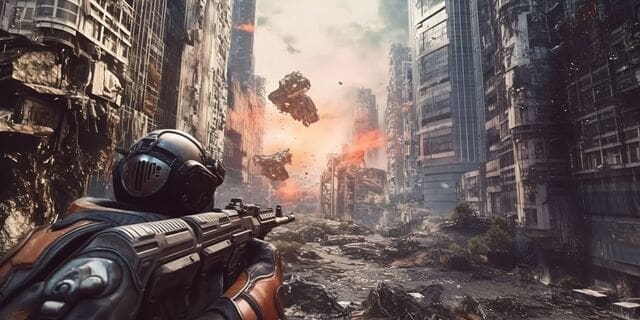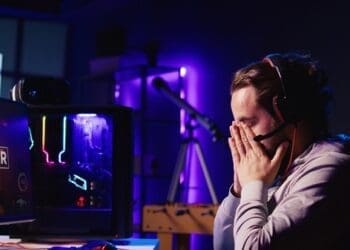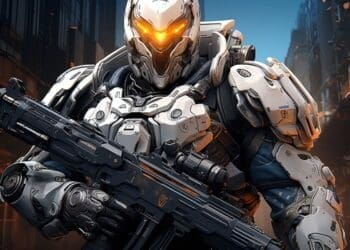The gaming world can’t stop talking about third-person MOBA games right now. Valve’s new creation Deadlock and the much-discussed Predecessor stand at the forefront of this excitement. Deadlock blends MOBA and hero shooter elements together, already pulling in around 150,000 players during its pre-release stage.
These third-person MOBAs bring their own unique flavor to the table. Deadlock takes players to an alternative 1920s world with characters like the demonic Infernus and snow-based Kelvin. The game’s match duration has become a talking point among players, as games often run longer than 30 minutes. Predecessor’s journey has been different, with players giving mixed feedback about its gameplay balance and mechanics.
Let’s take a closer look at both games to help you pick the right one. We’ll break down everything from gameplay and visuals to community features and future growth potential. This comparison will give you all the details you need to choose between these competitive titles.
Deadlock vs Predecessor: What Are These Games?

The gaming industry sees an exciting rise with two remarkable titles that redefine the limits of traditional MOBAs. These games bring unique features that have caught players’ attention worldwide.
Overview of Deadlock by Valve
Deadlock marks Valve’s latest venture into competitive gaming. This 6v6 team-based game combines third-person shooter mechanics with MOBA foundations. The game has gained massive popularity while still in early development. Player numbers show this is a big deal as they exceed 170,000 concurrent users in September 2024.
Players command unique heroes across three lanes on a vast map. They work with their “troopers” (NPC allies) to destroy the enemy “patron” – a supernatural entity that guards each team’s stronghold. Players collect souls and ability points through victories over troopers, neutral “denizens,” and enemy players.
The game’s alternative version of New York City sets it apart with its occult elements. Players can choose from over 30 heroes, each equipped with unique weapons and abilities that create various tactical options. Movement mechanics add depth through ziplines, teleporters, sliding, dashing, and mantling.
What is Predecessor and where it came from
Predecessor rose from Epic Games’ discontinued MOBA Paragon after its shutdown in 2018. Robbie Singh started Omeda Studios in 2020 to carry forward Paragon’s legacy when Epic released its assets. Epic Games supported the project with USD 2.20 million in funding through their MegaGrants program.
The game started as a buy-to-play early access title on December 1, 2022. It later became a free-to-play open beta on March 28, 2024. The full release launched on August 20, 2024. Built with Unreal Engine 5, Predecessor features over 30 heroes and keeps Paragon’s core look while adding fresh mechanics.
Third person MOBA vs traditional MOBA
Deadlock and Predecessor stand out with their third-person viewpoint that changes the MOBA experience completely. Traditional top-down MOBAs like League of Legends or Dota 2 feel different as the third-person view creates an immersive, skill-based combat system.
This viewpoint creates more intense, action-packed gameplay that needs precise aiming. Console players benefit from this perspective since traditional mouse-dependent MOBAs don’t work well with controllers.
These games keep core MOBA elements like lanes, minions, and base objectives. The perspective creates something new – a mix of strategy and action that appeals to many players. This blend bridges the gap between strategic MOBAs and action shooters, giving players the best of both worlds.
Gameplay Mechanics Compared

The gameplay mechanics reveal stark differences between these third-person MOBAs. Each game delivers a unique combat experience that makes it stand out.
Combat style and pacing
Deadlock stands out as an “anti-shooter” experience. Players might expect high damage from guns, but these weapons barely scratch the surface – a full magazine only depletes half an enemy’s health. The damage drops off drastically at range, so players can’t rely on traditional shooter tactics. Combat revolves around perfectly timed ability and ultimate activation rather than pure aim skill.
Predecessor takes a more traditional MOBA approach with its combat style. The game balances both melee and ranged options while emphasizing distinct roles and positioning.
Map design and objectives
Deadlock’s map got a complete overhaul. The developers changed it from four lanes to three, which created a more focused experience. The map’s tactical possibilities expanded with skybridges, rail systems, and air vents that add vertical gameplay elements. Players must collect souls from defeated troops and enemies to buy items and abilities.
Predecessor sticks to the classic three-lane MOBA design. The game features towers and inhibitors that lead to a core – destroy it to win.
Hero abilities and team roles
Deadlock’s roster includes 22 heroes. Each hero comes with unique weapons and four abilities that level up during matches. The game breaks away from traditional MOBA roles – support characters like Dynamo can build for damage and farming.
Predecessor keeps things structured with five defined roles: Offlaner, Jungler, Mid Laner, Carry, and Support. This creates more organized team compositions.
Match length and flow
Both games follow MOBA’s traditional progression through laning phases, team fights, and objective pushes. The third-person perspective adds new dynamics to engagement ranges and positioning.
Learning curve for new players
These games come with steep learning curves. Deadlock’s mix of shooter mechanics and MOBA elements often confuses newcomers. Players struggle to understand match progression without an overhead view. Predecessor challenges players differently – its role-specific gameplay requires deep knowledge of lane matchups and team coordination from day one.
Visuals, Characters, and Worldbuilding
Image Source: Reddit
These third person MOBAs draw much of their appeal from their visual identities. Each game takes a different artistic path to grab player attention.
Art style and setting differences
Deadlock’s artistic style has changed a lot during development. The game started with a Half-Life universe look, went through a vibrant “Neon Prime” phase, and landed on its current steampunk-fantasy blend. The final look mixes art deco, steampunk, and urban fantasy to create something unique. Rail systems add height to the world, which makes gameplay more interesting and looks impressive.
Predecessor builds on what Paragon started with photorealistic graphics from Unreal Engine 5. The game keeps the original’s high-quality visuals while carving out its own identity.
Character design and uniqueness
Players have mixed feelings about Deadlock’s character designs. Some think heroes like Yamato and Viper look too basic and need more work. Others point out that some characters look too similar to other games’ heroes, missing the unique touch that games like Smite have.
Predecessor wants its heroes to stand out while keeping Paragon’s style. The team puts more work into each hero’s story and connections than the original game did.
Voice lines and personality depth
Deadlock shines with its voice acting. Players love how much personality each character shows. Heroes talk to each other often, with special lines that play during specific moments. Characters like Pocket get their own shopkeeper lines, which adds fun moments and deeper character development.
Fans think they’ve spotted some well-known voice actors in Deadlock, including J.B. Blanc (Bebop), Ellen McLain (Female Announcer), and Andrew Bowen (Lash).
Immersion and thematic consistency
Deadlock’s world tells a story about humans and supernatural creatures after events called “Maelstroms.” This creates an uneasy peace where most beings live together while others use the chaos to their advantage.
Predecessor’s team saw room for improvement in the story department. They said: “Paragon impressed us with its visuals and environments, but the game had barely any lore. We feel that was a missed opportunity”. They plan to build a complete world that helps players connect with the characters emotionally.
Community, Performance, and Future Potential
Image Source: Ticket Fairy
The success of these competing third-person MOBAs depends on their unique communities and technical foundations that work behind the scenes.
Player base and community feedback
The population difference between these games stands out clearly. Deadlock has reached 164,855 concurrent players while still in invite-only development. The game’s Discord servers buzz with active discussions about strategies and game mechanics. Predecessor’s numbers tell a different story with 2,118 active Steam players. These numbers dropped from its peak of 7,339 concurrent players in December 2022.
Deadlock’s community shows real enthusiasm. Players take part in discussions about strategy and mechanics actively. Valve made a change from fixed two-week updates to bigger but less frequent patches. Developer Yoshi explained this: “our fixed two-week cycle has made it more difficult for us to iterate on certain types of changes internally”.
Performance and optimization issues
Technical challenges plague both games. Deadlock players have reported bad performance issues after recent updates. Many players experience “massive stutters” about 30 minutes into matches. One player pointed out, “framerate doesn’t drop much… but 30 mins into every match I get the worst input lag and stutters”.
https://technologyconsumer.com/10-best-moba-titles-that-will-keep-you-hooked/Predecessor doesn’t deal very well with optimization, especially when you have team fights where frame rates can drop to 75-80 FPS. On top of that, players report “heavy FPS drops in very early game phase”.
Esports potential and developer support
Deadlock shows early promise in esports with grassroots tournaments like BB Deadlock Cup and Downtown Showdown. More importantly, influential streamer shroud has become the most-watched Deadlock content creator with “over 1.5 million hours watched and almost 90 hours streamed in just two weeks”.
How each game handles matchmaking and toxicity
Deadlock uses a smart matchmaking system with hero-specific MMR that tracks skill for each character separately. The system looks at a player’s 20 most recent games with a specific hero to figure out their skill level. All the same, players criticize the system because it sometimes assigns heroes with low priority and creates frustrating matches.
Predecessor fixed a big matchmaking bug and added a Party MMR Multiplier to balance teams with grouped players. The developers were honest about it: “We made a conscious decision… to bias towards faster matchmaking times… we acknowledge that the quality bar for match fairness has suffered”.
Conclusion
The choice between Deadlock and Predecessor comes down to what you want most from a third-person MOBA after really learning about both games.
Deadlock leads by a huge margin with its player base. The game boasts over 160,000 concurrent players while Predecessor has just over 2,000. This massive community means you’ll find matches faster and enjoy a more active competitive scene. Valve’s steampunk-fantasy world also brings unique verticality and mobility options that create exciting gameplay moments.
In spite of that, Predecessor stands out if you’re looking for a traditional MOBA setup with defined roles and photorealistic graphics. The game builds on its Paragon roots well but doesn’t deal very well with keeping enough players engaged.
These games share some technical hurdles. Players report bad stuttering in long Deadlock sessions, and Predecessor drops frames during big team fights. The good news is these issues should get better as development moves forward.
Deadlock’s future looks brighter thanks to Valve’s backing and a growing esports presence. But Predecessor might find its place, especially with loyal Paragon fans.
Whatever game catches your eye, both titles show how far MOBAs have come. The third-person view makes them more immersive and action-packed than classic top-down MOBAs. Your choice should line up with how you like to play – pick Deadlock for flexible, ability-focused gameplay or Predecessor for that classic MOBA feel with clear roles.
These new third-person MOBAs are great alternatives to giants like League of Legends and Dota 2. They might just change competitive gaming’s landscape over the next several years.
FAQs
Q1. Is Deadlock more of a shooter or a MOBA?
Deadlock is a unique blend of both genres. While it features guns, it’s not a traditional shooter. The game emphasizes ability usage and strategic play more than pure aim skill, making it a hybrid that leans more towards MOBA gameplay with shooter elements.
Q2. How does Deadlock’s player base compare to Predecessor’s?
Deadlock has a significantly larger player base, with over 160,000 concurrent players, while Predecessor maintains around 2,000 active players on Steam. This difference impacts matchmaking times and community engagement.
Q3. What are the main differences in gameplay between Deadlock and Predecessor?
Deadlock offers more flexible playstyles and unique mobility options, while Predecessor follows a more traditional MOBA structure with defined roles. Deadlock’s combat focuses on abilities and gunplay, whereas Predecessor maintains classic MOBA combat mechanics.
Q4. How do the visuals and settings differ between the two games?
Deadlock features a steampunk-fantasy blend with art deco elements, while Predecessor offers photorealistic graphics powered by Unreal Engine 5. Deadlock’s setting is more stylized, while Predecessor builds upon the esthetic established by its predecessor, Paragon.
Q5. What performance issues do players face in these games?
Both games have reported performance challenges. Deadlock players experience severe stuttering during extended sessions, particularly after 30 minutes of gameplay. Predecessor users report frame rate drops during intense team fights and in the early game phase.





















































